LIFTAR
Verizon Connected Future III In collboration with NYC Media Lab and Verizon
Our team's project, LIFTAR, was awarded to be one of the Verizon Connected Futures Prototyping and Talent Development program for the creation of new prototypes in Social AR.
LIFTAR is a game experience for parents and children
to engage together on educational lesson plans for 5th grade Mathematics. Our lesson plan aims to build a relationship between parent and child while learning and working together.
We wanted to make sure that parents were involved in the process. This is not just a teaching application, this is intended to be a social interaction that makes homework less daunting, and encourages children to rely on their parents when they face issues.
(Open the audio for the narrative)
Group Members:
La Tricia Watford, Team Lead, UX/UI/Graphic Designer
Aimee Abalos, Game Designer, Unity/AR/Multi-player Network Developer
Aaron Lee, Game Designer, Unity/AR/Multi-player Network Developer
Karla Polo, Videographer, 3D Asset modelling & Animator
Sydney Adams, Game Designer & Narrative
NYC Media Lab x Verizon Connected Futures III 2017-2018
The New School Tech Talk: Inside the Verizon Challenge with Team LiftAR
Role
AR Developer
Game Designer
Tool
Unity, ARKIT,
Vuforia, Maya
Platform
iPhone, iPad
THE VERIZON CHALLENGE
How can we empower multi-person communication in VR/AR experiences?
Use an AR interaction to be between two people, create a close proximity interaction the uses 2 mobile/table devices that comminicate with each other in order to complete the task.
INTRO
Do you remember when you needed help with your homework, and went to your parents for help? Can you recall if your parent was willing and capable, or looked horrified at the prospect of having to help you?
HOMEWORK AND FAMILY STRESSES

Parents engagement in schools is proven to be essential for students academic achievement. Students involved parents are determined to earn higher grades, better test scores, fewer behavioral problems, enroll in a higher-level program. Overall, parents involvement has a significant impact on students future success.
The assignment is a great communication tool for parents and child to talk about the child’s school progress and performance. However, it is also one of the main problems that bring family stresses both in parents and the child. Children struggle with their homework which leads them to request for help from their parents.
Not all the parents can give help to their child. The homework and curriculum get more difficult every year, and parents become obsolete, even despite their best efforts.
RESEARCH FINDINGS ON
USER INTERVIEW
Parents
1. Parents are unable to the understanding of new teaching methods/topics. Kids working in STEM field and trying to move forward past basic knowledge and territory.
2. Parents loss confidence due to their limited education to help their children to solve their math work. They won’t provide any feedback or help to their child due to fear of embarrassment. This lead to loss of engagement and quality time between the parents and the children
3. Parents are busy.
Child
1. Kids don’t like physics and math, They started to fall back when the school’s math curriculum started to teach math.
2. Kids believe their parents know everything. Students rely on their parents to help them with their homework when they struggle with challenging problems.
THE QUESTIONS
How might we bring them to learn together in a interesting way?
How do we remove the challenge for parents who want to help their children with their math homework?
LIFTAR is a game experience for parents and children to engage together on educational lesson plans for 5th grade Mathematics. Our lesson plan aims to build a relationship between parent and child while learning and working together.
GOAL
1
BUILDS PARENT AND CHILD’S
CONFIDENCE
BUILDS PARENT AND CHILD’S
CONFIDENCE
Provide a social interaction that makes homework less daunting for parents and child, and encourages children to rely on their parents when they face issues. Parents and child bond through working together.
2
FUN, ENTERTAINING AND
PLAYFUL ENVIRONMENT
FUN, ENTERTAINING AND
PLAYFUL ENVIRONMENT
Take advantage of the new technologies such as Social AR/VR to make math interesting and comprehensive for elementary school children.
3
ENHANCE PARENTS AND
CHILD ENGAGEMENT
ENHANCE PARENTS AND
CHILD ENGAGEMENT
Make education to be an uplifting experience, and we hope to turn the hours spent each night doing homework, into time kids spend with their family.
PERSONA


John
55 years oldWorks in the marketing department of a pharmaceutical company.
It has been so long since he did math. He wants to help his son with his homework but is unsure if his ability.
David
5th GradeAttends a private school on the upper east side. He has been attentive in all his math classes but currently finds his math homework more challenging, currently with fraction, and would like help with his homework from his dad.
GAME DESIGN
PROCESS

STORY
Parents and Child are both astronauts that are in a dire situation due to the collapse of their rocket panel malfunctioning. Their goal is to fix the rocket control panel in order to get back to earth and in order to do that they need to construct panel pieces.
This game comes with a kit that contains a grid board and colored circle pieces. Once the board is placed, both the parent and child open the app on their own individual devices such as an ipad or iphone. Once the two players have entered, they will have to answer a series of mathematical problems individually under a timer. After successfully answering a problem, coordinates will appear for the player to place a colored marker onto the board. If answered incorrectly, the player will be given a new problem. Once both the parent and child have completed all of the problems, they can scan the physical board and a piece of the control panel is added into the inventory and then the next level of the game commences.
PAPER PROTOTYPE
Our goal is to create an AR game experience for parents and children to engage together on educational lesson plans. Our lesson plan combines adding and subtracting fractions and geometric shapes plotted on a cartesian plane
In the full game experience the parent and child will continue to help the astronauts whose goal is to fly through space collecting unusual artifacts.
Our lesson plan combines tactile learning with geometric shapes plotted on a cartesian plane, and Augmented Reality, in order to explore abstract concepts, like adding and subtracting fractions.
NEXT STEPS
• Determine game mechanics
• Research Lesson plan reference
• Finalize math problems
• Start AR Single Player Development
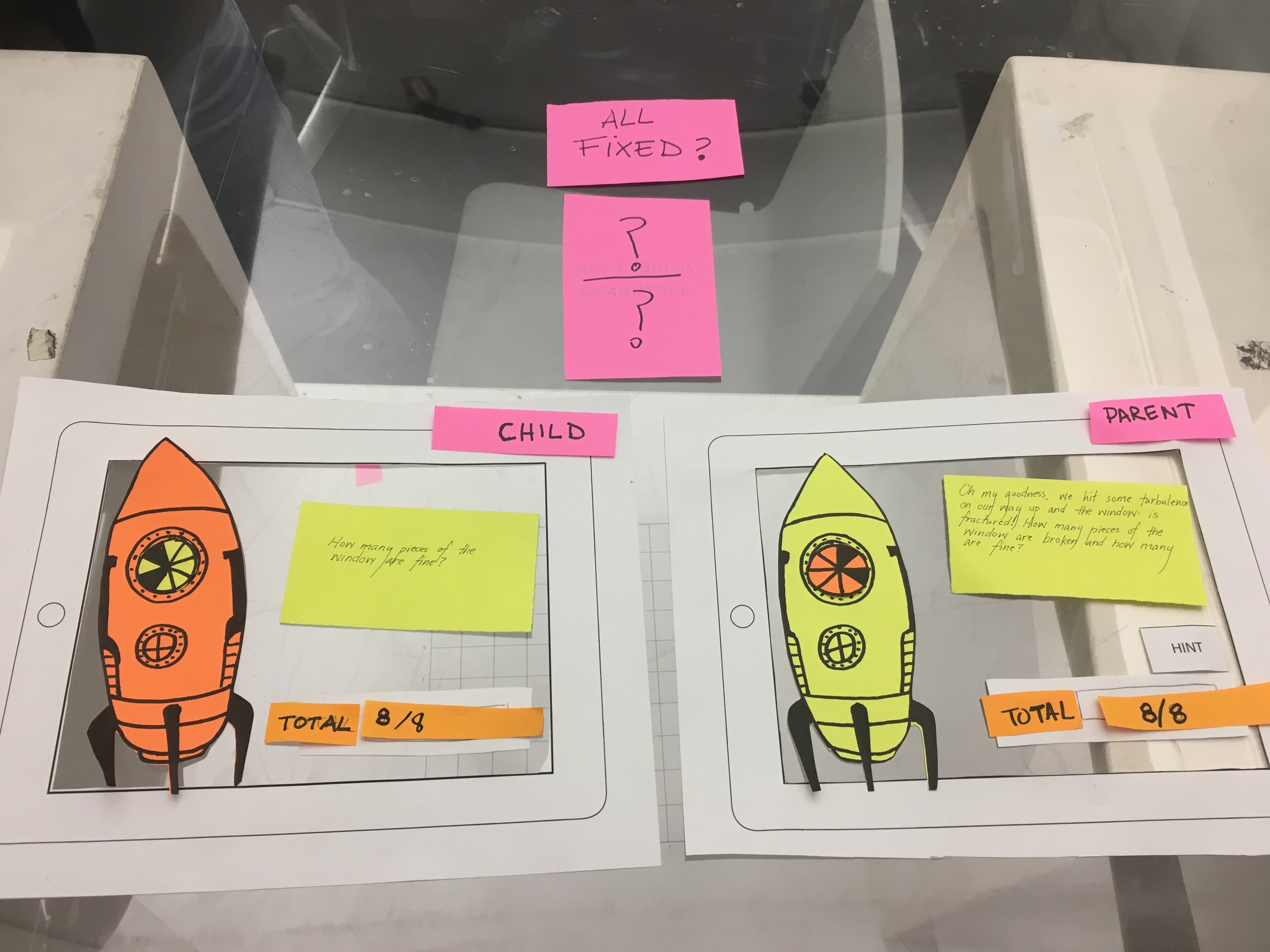
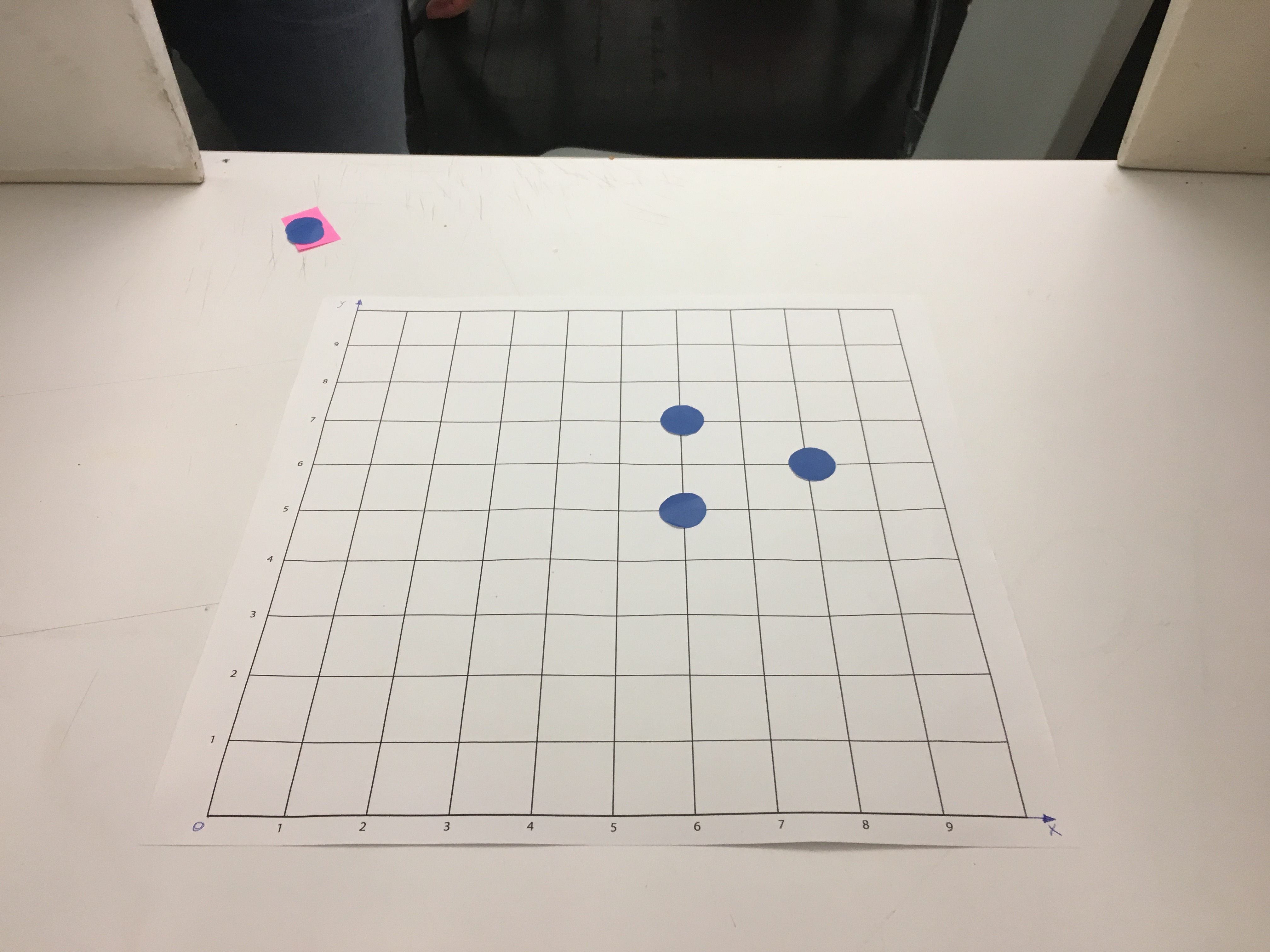
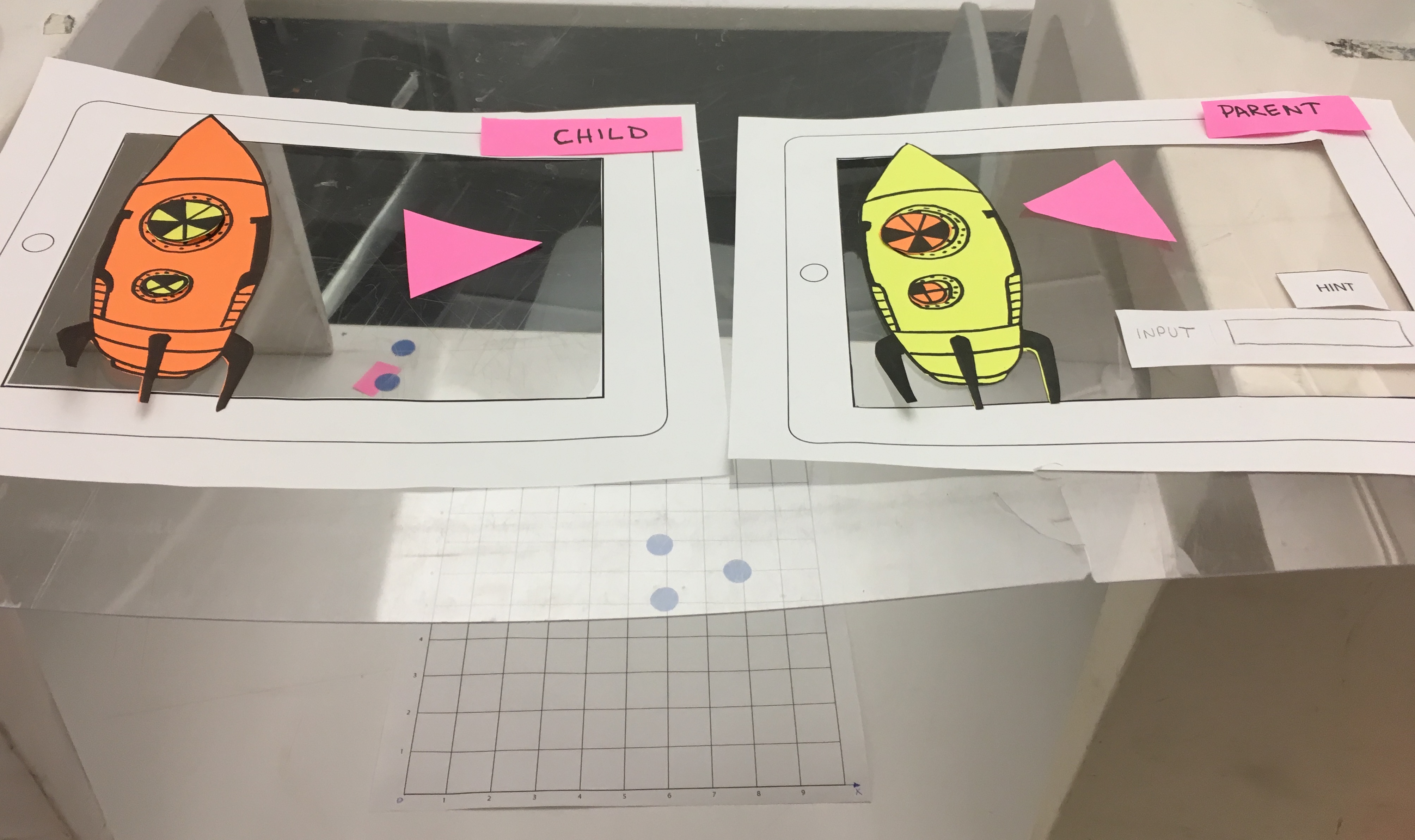
INITIAL CONCEPT VIDEO
DEVELOPMENT PROGRESS
UNITY & ARKIT

Multiplayer and Networking
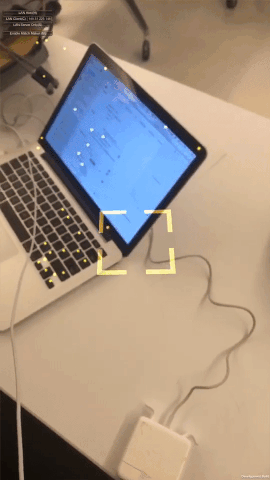
Challenge
3D Positioning and Synchronization with ARKIT
In the first couple weeks, our team played with ARKit's plane detection to instantiate objects allow our objects to exists in the real space. But the difficulties in synchronizing the 3d objects on instantiating an object in the real world position on both the child and parent devices hinder our development process on the multiplayer network communication. The technical limitations bring our team to use Vuforia marker detection and rebuild the whole project. Fortunately, Vuforia project development is quicker and easier compare to ARKIT.
NEXT STEPS
• Visualize 3D User Flow
• Change Plane Detection to Marker Detection
(Moving from ARKIT to Vuforia)
• Animations and Sounds
USER INTERFACE & USER FLOW

USER TEST


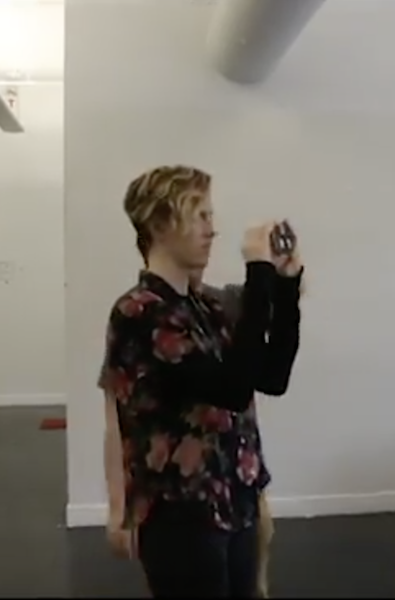
1 Experience with AR varied from none to very experienced
2 Everyone is moving all over the space the parent and child can’t work together in the current set up
DEMO DAY



